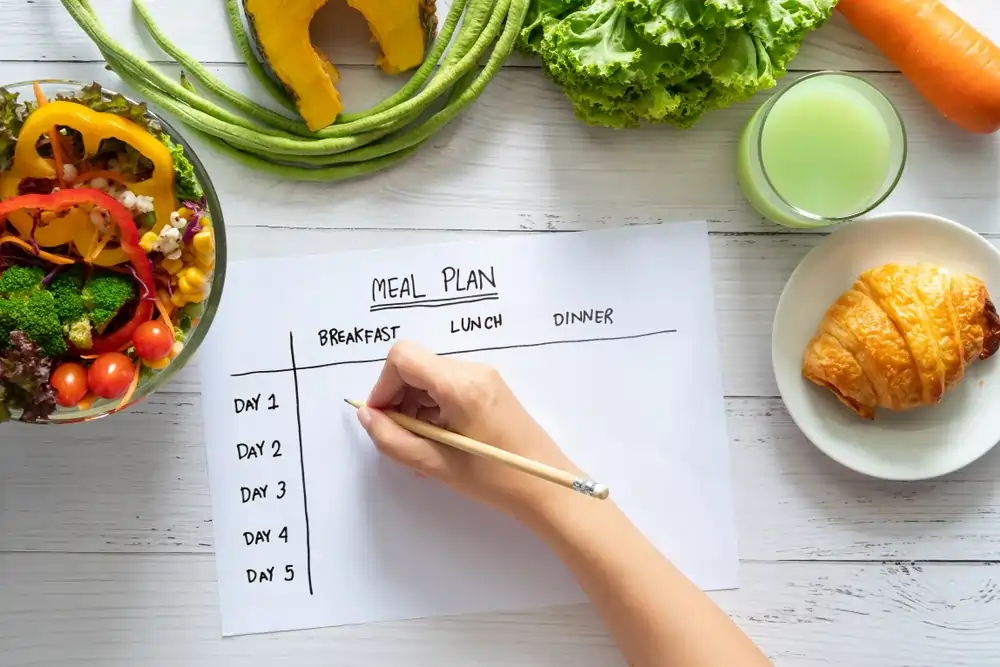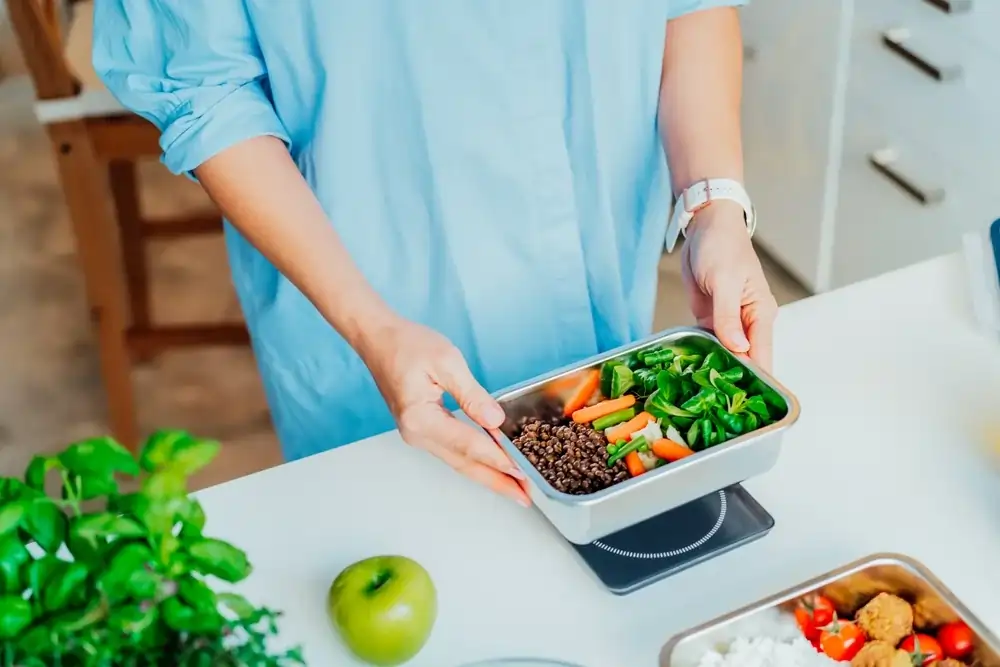What Are Ways to Make the Most of Family Meals?
Family meals have more significance than most people might guess. They are a ritual that may unite everyone and transform regular evenings into treasured events. According to a recent study, children who enjoy family meals at least four times a week have improved emotional wellbeing and show superior academic performance. This startling number emphasizes the need to sit down together.
Frequent family dinners are about more than simply food. They present a chance to deepen relationships, improve communication skills, and grasp daily difficulties shared by one another. Among busy schedules, these times become a pillar of family life. Children pick behaviour from seeing adults. Parents learn about what goes on in their children’s classrooms. Everyone feels like they belong. This unity paves the path to more in-depth dialogues and helps build confidence.
Families can have challenges, including limited cooking knowledge or competing schedules. Still, you may overcome these challenges with some imagination and forethought. Regular family meal planning helps create better wellbeing and closer relationships. Structured plans can help you prevent dinnertime last-minute anarchy. You can save money, lower tension, and produce special events your kids will remember favourably.
In this post, you will learn practical ways to maximize the value of your family meals. We will discuss techniques for planning, cooking, and adapting to different dietary needs. We will also explore how weekly meal prep plans for large family structures can streamline the process. You will discover the best family meals when life pulls you in many directions. Finally, we will look at several meal plans for families so you can customize your dinner table to fit everyone’s preferences. Let’s dive in and unlock the ways to make the most of family meals.
Why Family Meal Planning Matters
Strengthening Family Bonds
Family dinners create relationships unlike those found in every day life. Sitting around the table allows every family member a forum to express themselves. Even in brief, conversations give everyone value. Children typically share their educational experiences or any challenges they encounter. Parents can provide direction and notice early stress warning signals.
Children who routinely dine with their families also grow to have better emotional health. More confident communication skills follow from their learning to express emotions and thoughts. Teenagers who attend family dinners have been found to be less likely to engage in risky behavior or suffer with sadness. They have practiced polite communication at home, hence they usually do better in social events.
Shared mealtimes also provide happiness. Everyone can tell jokes, discuss their day, or relate humorous stories. This laughter helps to lower stress and strengthens relationships. Younger kids like to help prepare the table. Teens could assist with more difficult chores like vegetable cutting. The family runs like a harmonic team when every member participates.
Saving Time and Reducing Stress
Meal planning seems to many to entail additional effort. As it turns out, evenings are easier. Choosing ahead of time what to make helps you prevent last-minute scrambling. You won’t have to search the refrigerator looking for foods that go together. Rather, you can arrange your selected ingredients ahead of time and easily enter cooking mode.

Also more simplified is grocery shopping. Having a plan allows you to enumerate every item required for the next week. You then go one quick trip. This strategy reduces arbitrary store visits and impulse purchases. You save money and gasoline over time.
Family meal preparation helps you to reduce mental burden as well. When you are already worn out, you do not have to balance limitless options. Following a calendar helps you to be consistent. You might also assign different family members culinary chores. This kind of cooperation lessens the load on any one person as well. Meal planning helps you to establish a sense of order that advantages everyone.
Cost-Effectiveness
A well-crafted plan enables you to follow a budget. You purchase just what you need for planned dinners. Less waste of food follows from this. For big households, grocery budget control is crucial. When you buy arbitrary goods that expire or go unused, the expenses mount up.
Meal preparation also makes bulk buying—often less expensive—easible. If chicken, beans, or rice show up in several recipes, you can buy lots of them. You cut additional journeys and per-unit expenditures. You also can see sales for basic ingredients. Arranging your meals around sales helps you to maximize savings without compromising quality.
Leftovers turn from a hassle into a benefit. You save the need for different goods if you intend to use leftovers of proteins or vegetables in another meal. This method maintains a clutter-free refrigerator and a happy wallet. In the end, a good family meal planning system must be somewhat cost-effective.
Week Meal Prep Plans for Large Families
Assessing Your Family’s Needs
Before you jump into a week meal prep plan for large family routines, examine everyone’s dietary needs. Identify allergies, intolerances, and personal preferences. Some kids could find spicy food objectionable. Others might call for gluten-free cuisine. Parents could wish for more protein. List all these elements then look for ingredient overlap.
Still another essential element is portion control. Many times, large families run the danger of cooking too much. If nobody wants leftovers the next day, they can go to waste. Knowing everyone’s appetite helps you to adjust the quantities. This procedure keeps the refrigerator clutter-free and helps to save money.
Monitoring the weekly calendar of your family is also wise. Determine which days you need quick meals most often. For those evenings, plan easier dishes or slow cooker dinners. Choose meals that would take more time to make on weekends or free days. This harmony helps you to meet the rigors of daily life.
Creating a Weekly Meal Schedule
Create a weekly template after you know everyone’s needs. Many households find great enjoyment in themed dinners. For extra vegetables, try Meatless Monday; Taco Tuesday is a quick meal; Pasta Wednesday keeps things interesting. This framework simplifies decisions and builds expectation.
Let your family help create menus. Once a week, have them choose their favourite meal. Children enjoy being part of things. It also imparts to them responsibility and respect for the tastes of others. Let older kids handle one of the themed evenings if they like cooking. Their learning of new kitchen skills is inspired by this practical approach.
Post your calendar somewhere everyone can view, for as on a household bulletin board or the refrigerator. In this case, nobody queries what dinner is. This visual cue also reminds you to advance meat out to thaw or soak beans. With a set agenda, you make dinnertime a regular and fun family gathering.

Efficient Grocery Shopping
Grocery visits can feel taxing for a large household. Your friend in organization is an ordered list. Sort it into categories: produce, meats, dairy, cereals, pantry basics, frozen foods. This approach guides your more effective shopping. It also lessens the possibility of essential component forgetfulness.
Buying in bulk usually helps to lower expenses. Usually, big bags of pasta or rice have a less cost per serving. Buy only in quantity, though, if it fits your calendar. Should you not intend to make use of a large mayonnaise jar, it could go bad. To cut waste, carefully match bulk purchases to scheduled meals.
See sales products and schedule around them. Should chicken breasts be on sale, you can prepare several chicken-based dinners that week. Plan turkey chili or sandwiches if turkey is on sale. This adaptability makes the most of retail promotions possible. Your buying approach changes with time to match the trends in your household.
Prepping and Storing Meals
Plan a block of time—maybe on Sunday—to get ready. Rine leafy greens, cut bell peppers, and chop onions. Sort these in resealable bags or airtight containers. If it fits your strategy, pre-cook proteins. Early preparation helps weekday cooking go faster and under less stress.
Large households absolutely must batch cook. Divide a large pot of stew, chili, or soup into smaller pieces. When you have less time later weeks, freeze some for then. Also, start the week by cooking big batches of rice or quinoa. They are easy side dishes or lunchtime reheatable.
Good storage preserves taste and nutrition. Never forget to date containers. Separate raw meat from fresh vegetables to prevent cross-contamination. Arrange labeled containers properly, fronting older goods. This visual system stops lost leftovers. Two quick reheat techniques are heating food on the stove with a dash of water or using the microwave in brief bursts. You preserve textures in this way.
Best Family Meals to Go
Grab-and-Go Breakfasts
For large households, mornings might be disorderly. You don’t have to, however, rely daily on sugar-packed cereals. Time-savers are grab-and-go breakfasts including overnight oats. In a jar toss rolled oats, milk, yogurt, fruit. Let it chill over night in the refrigerator. Just grab a spoon first thing in morning.
Breakfast burritos also go really nicely. Stuff veggie, cheese, and scrambled eggs into tortillas. Tightly wrap them and then freeze. Pop one into the microwave when you want a cosy breakfast. Smoothie cartons offer still another quick choice. Measure fruit and leafy greens into freezer-safe bags. When it is time for breakfast mix with your preferred yogurt or milk.
Get kids involved in cooking these dishes. They can build burritos or toss their preferred fruits over grains. Their enthusiasm over breakfast is heightened by this participation. It promotes also self-sufficiency. Having these available helps you to reduce morning tension and boost your consumption of nutritious meals.
Portable Lunch Options
Mobile lunches are commonly needed by families on the run. Mason jar salads contain dressing at the bottom, therefore preventing sogginess. Stack chopped vegetables, beans, and cooked quinoa. Next top it with leafy greens. To equally distribute the dressing, shake the container when you are ready to eat.
Also travel nicely are sandwiches and wraps. For more fiber, pick whole-grain tortillas or toast. Stuff them with turkey, cheese, lettuce, even hummus. Use sparing spreads to prevent sogginess. Store your lunch in the refrigerator you have at work or a university until mealtime.
Use yogurt or fruit to balance your diet. Add for crunch small carrots or cucumbers sticks. A little jar of seeds or nuts provides good lipids and protein. Making lunches beforehand helps you cut the temptation from quick-service restaurants. You also make sure your family consumes balanced nutrients all through the day.

Dinner on the Move
Weeknights can bring music lessons, soccer drills, and last-minute late business meetings. Your family may have to be fed in the automobile. Under these circumstances, pack meals fit for travel. Properly sealed, a thermos filled with soup or stew stays warm for hours. Young people who need food before an evening function will find single-portion thermoses perfect.
Sheet pan dinners help with packing. In one pan roast chicken, vegetables, and potatoes. When done, separate them into travel-oriented containers. These containers become lifesaver if your evening is too busy for a seated meal. Alternatively, simple Instant Pot dishes are among the greatest family dinners available. Portable versions of chili, spaghetti meals, and casseroles all fit rather nicely.
Make a strong insulated bag or cooler investment. This maintains meals either hot or cold as needed. Seek leak-proof, BPA-free containers. You therefore avoid running across spills in your car. Using the correct strategy can help you to keep good eating habits even on the road.
Utilizing Leftovers
Leftovers often get pushed to the back of the fridge and forgotten. Yet, they can be your biggest ally for best family meals to go. Shred extra chicken and stuff it fresh vegetable tortillas. Roasted leftovers can become frittatas or wraps. Using food again saves time and money.
Plan particular “leftover makeovers” for each weekly meeting. For example, utilize the residual bits of a big chicken roasted on Sunday for chicken soup on Monday. Turn leftover spaghetti you have into a cold pasta salad using chopped tomatoes, cucumbers, and a vinaigrette. This maintains the freshness of your food free from monotony of same leftovers.
Urge your family to start becoming creative. Get their creative ideas for interesting ways to repurpose leftovers. For a quick fried rice, kids could like mixing leftover rice with scrambled eggs, vegetables, soy sauce. Regularly using leftovers not only increases variety but also greatly reduces food waste.
Meal Plans for Families: Tailoring to Different Needs
Meal Plans for Busy Families
Common in modern homes are time limits. You still can, however, make healthful dinners. Pay especially attention to dishes that call for 30 minutes or less. If you pre-cut vegetables, stir-fries are great options. Sheet pan dinners also cut cleaning. Turn to kitchen appliances like pressure cookers and slow cookers for even speedier choices.
Starting in the morning, slow cookers allow you to Your meal is tender and ready by supper time. Pulled pork, stews, or curry may all be made without continual oversight. Like the Instant Pot, pressure cookers half usual cooking times. A good chili or roast takes minutes to savor.
For last-minute meal assembly, keep a well stocked pantry. Stock basics include spaghetti, tinned tomatoes, beans, and chicken broth. If unanticipated events strike, you can mix these fast. Freeze several entire meals in labeled containers for even more ease. Then, on exceptionally hectic evenings, defrost them.
Healthy and Balanced Meal Plans
A balanced diet enhances general wellness, mood, and attention span. Add entire grains, lean proteins, fruit and vegetables, and good fats. Top nut butter oatmeal or whole-grain bread first thing in morning. Load plenty of vegetables in salads or wraps during lunch. For dinner, highlight lean foods like chicken or fish together with roasted or steamed vegetables.
Cutting processed foods and sugar might seem difficult. Still, little adjustments have great impact. Swap sweet sodas for herbal teas or flavored water. Choose unsweetened yogurt over sweet varieties. Mix natural seasonings with sweet sauces or dressings to gradually reduce them back. These minute changes over time might greatly affect health.
Maintaining equilibrium calls on careful meal preparation. Plan your week such that each meal has enough fruit and vegetables. To guarantee variation, try color-coding your produce list. Plan to incorporate something green, something orange or yellow, and something purple or red, for instance. This rainbow strategy promotes variety of nutrients. It also helps food look good.

Vegetarian and Vegan Meal Plans
Diets based on plants are become more and more fashionable. They improve health and lessen environmental impact. Still, you have to guarantee appropriate protein consumption. Plant-based proteins abound from beans, lentils, chickpeas, and tofu. Healthy fats abound in nuts and seeds. Take also into account cereals like quinoa, which have more protein than ordinary rice.
Children could first be dubious about vegetables. Try hiding them in some great sauces. To make tomato sauce, for example, toss sautéed carrots, onions, and peppers. Present it on whole-grain pasta. Roasting vegetables with olive oil, salt, and herbs adds still another layer of complexity. Roasting produces a nice texture and sweetens taste.
Share fresh plant-based dishes slowly. Plan Meatless Monday dinners to test vegetarian cuisine. You may create vibrant vegetable tacos or filling lentil soups. Motivational children should choose one vegetable they wish to try every week. This participation can lower opposition. They might develop throughout time to appreciate different tastes and textures.
Allergen-Friendly Meal Plans
Sensitivities to food allergies call for careful preparation. Clearly mark your meals for gluten, dairy, peanuts, or another allergy. Organize food free of allergens in separate containers or color-coded bins. This protects your family and stops cross-contamination.
When shopping for groceries, carefully go over labels. Many sauces have gluten hiding under their surface. Nuts might show up in odd places like baked products or cereal. If you find it intimidating to review every product, concentrate on whole foods. Purchase proteins free of hidden allergies as well as fresh fruits and vegetables. This streamlines your food intake.
Replace allergen-free components in familiar recipes. For those who can eat nuts, for example, use almond milk for dairy milk. If not, give oat or soy milk several tries. Bake with a gluten-free blend rather of wheat flour. Provide diversity by investigating recently launched products on the market, such as egg substitutes or dairy-free cheeses. With some imagination, you can replicate many great foods without aggravating allergies..
Practical Tips for Making the Most of Family Meals
Engaging Children in the Process
Youngsters may value meals more if they help make them. Set projects suitable for your age. While older children might cut softer fruit with a kid-safe knife, toddlers can wash produce in a bowl of water. Teenagers could find sautéing or grilling fun. Meal prep teaches children life skills as well.
Motivational children should try new ingredients they assist in cooking. They start to ask questions about how something is cooked. They might be more eager to sample the finished meal and feel good about their efforts. Picky eaters sometimes grow more daring with time.
You could even offer every youngster a “specialty.” Someone can be in charge of arranging the silverware and napkins on the table. Another may help measure ingredients or handle beverages. This feeling of duty promotes responsibility. It also provides you additional hands to lighten your responsibilities. Bonus points include encouragement of family pride and teamwork.
Creating a Welcoming Table Atmosphere
The dinner experience is much influenced by the surroundings at the dining table. Turn off the TV, silence phones, and hide away gadgets. Eliminating these distractions helps everyone participate in actual communication. This quiet surroundings also aid to lower stress.
Take into account including family customs or basic decorations. Set a floral arrangement or light a little candle. Before dinner, some families like to spend a quick thanks-you moment. This custom can create a good vibe. Others choose to rotate a “song of the day,” whereby one chooses background music. These little details, regardless of your taste, help to make supper memorable.
If your family follows religious or cultural customs surrounding meals, welcome them. Celebrating your background together helps you to develop your identity. If not, you can start fresh customs. One monthly “theme night” for example offers freshness. Everyone is enthralled about sitting down to eat in this friendly environment.

Time-Saving Kitchen Hacks
Kitchen shortcuts save a lot of crucial minutes. One strategy is to start the week batch-cooking grains—like pasta, quinoa, or rice. Keep them in tightly sealed containers. You may reheat them fast for several dinners. Meal component freezing is another trick. Freeze a big batch of tomato sauce or broth in divided containers.
Set-it-and-forget-it dishes call for your slow cooker or Instant Pot. You can help children with homework or finish other tasks while your dish simmers. Keep often used utensils and spices close to hand. Once everything is in logical order, you will move more quickly.
Take also into account mass vegetable preparation. On the weekend, wash, peel, and cut a range of produce. Organize them by cooking time and into labeled containers. One could pair potatoes and carrots, for instance. Perhaps in another container are mushrooms and onions. This approach lets you have more free time by accelerating midweek cooking.
Encouraging Conversation
Mealtimes should be participatory, not merely a recharging ritual. Suggest interesting themes or ice-breakers to start conversation. Children should be asked to share one highlight and one challenge from their daily life. Call on everyone to show thanks for something lately.
Turn positions like “meal planner” or “family chef” around. The person in charge can present the dinner or describe the cooking technique. They might also choose the evening’s conversational opener. Every person feels respected and confidence is raised by this rotation.
Remain polite and open-minded. Even if differences develop, promote a peaceful sharing of ideas. Children pick up conflict management from observing how adults approach differences. This develops communication skills and emotional stability they bring into adulthood.
Overcoming Common Challenges
Dealing with Picky Eaters
Picky eaters will try your endurance. Still, there are approaches to motivate them. Let them help with food planning. Let children choose the vegetables to feature in a recipe. Those who feel ownership are more willing to sample novel tastes. Provide sauces or dips as well; a moderate hummus or yogurt dip. Sometimes a preferred sauce might accentuate a newly discovered vegetable.
Another strategy is surreptitiously adding healthy foods to familiar recipes. Pasta sauce can include spinach blended in. Mashed cauliflower goes great with mashed potatoes. Taste changes with time. Children might not even be aware they are absorbing extra nutrients.
Consistent behavior counts. Offer tiny amounts of a food you hate several times. It may take numerous tries before acceptance blossoms. Steer clear of bribing or underlining pressure. Rather, keep a calm mindset. Celebrate little successes, like one mouthful. You gently widen their palette by fostering a good atmosphere.
Managing Busy Schedules
Modern homes balance job, education, and extracurricular activities. Although it seems hard, planning family meals helps to give it top importance. On a common calendar, mark family dinners. Treat them as any significant event would need. Keep to those three nights a week even if you can only gather three times.
Turn on time-saving gadgets. All slow cookers, pressure cookers, and air fryers do is cut hands-on time. Ingredients can be ready the evening before, refrigerated, and then started cooking in the morning. Dinner almost ready when you get back. If you still have little time, delegate chores to family members. One might marinade meat, another vegetables. Cooperation helps to speed up the process.
Plan twice-daily meals. If you cook roast chicken on Monday, for example, use leftovers for chicken tacos Tuesday. Prep time is cut in half this way. Also keep a list of go-to 15-minute dishes. In a hurry, a balanced dinner can include scrambled eggs with vegetables, grilled cheese with a fresh salad, or a quick stir-fry.

Staying Consistent
At first, motivation is easy; then, one can easily revert into previous patterns. Establish reasonable goals to remain consistent. Try three nights a week if daily dinners are out of reach. Share the strategy with everyone so they will see the value of turning up.
Honish little victories. Every dinner that we have is successful. These little victories grow second nature over time. Have everyone record preferred dishes or special events in a family notebook. Reviewing these entries helps you to remember why you are trying.
When plans change, adjust. Events in life could cause you to change your usual supper hour or substitute a cooking day. One must be quite flexible. Meal planning and shared dinners go more naturally the more you practice. Consistency generates momentum. It finally turns from a forced habit into a beloved custom.
Conclusion
Recap Key Points
Family meals offer more than nourishment. They foster close bonds, improve communication, and spark joyful memories. By embracing family meal planning, you also save time and cut costs. You reduce the stress of last-minute cooking and use week meal prep plans for large family schedules to fit your household’s pace. You can also explore best family meals to go when you have to eat outside the home. Finally, you can tailor meal plans for families to meet various dietary needs, ensuring that everyone can enjoy a seat at the table.



